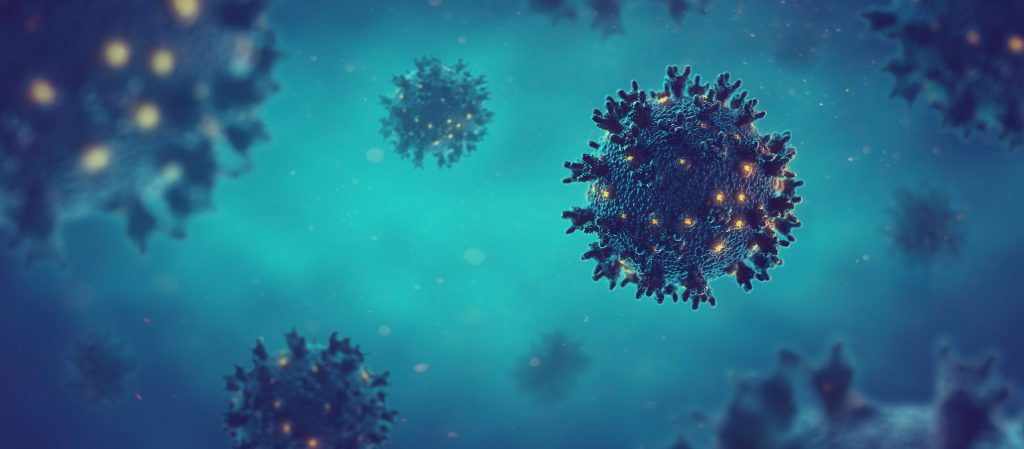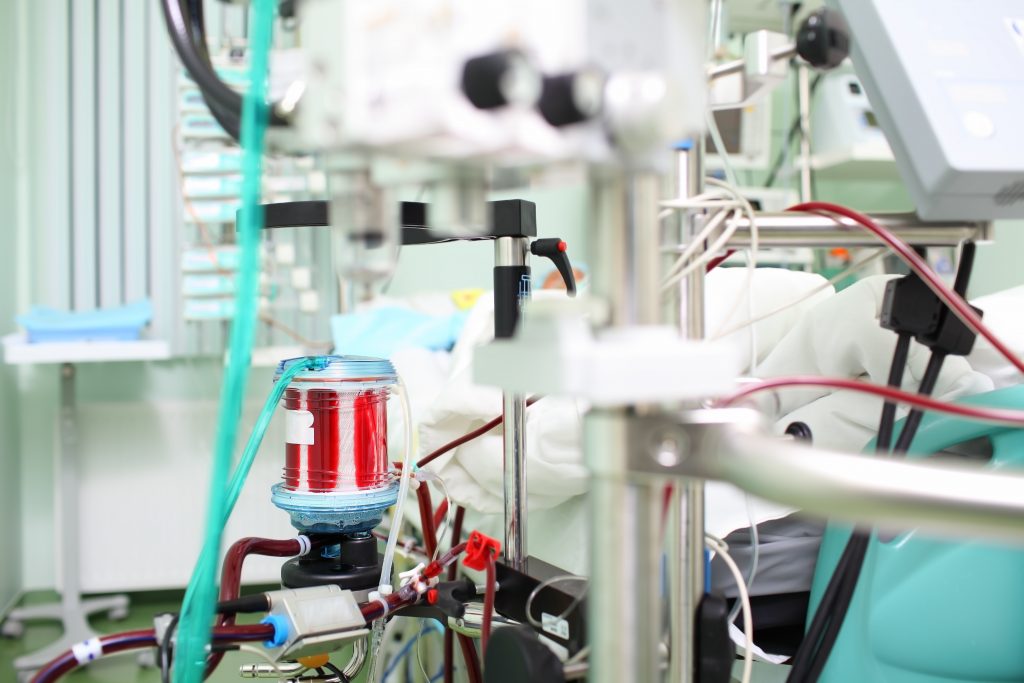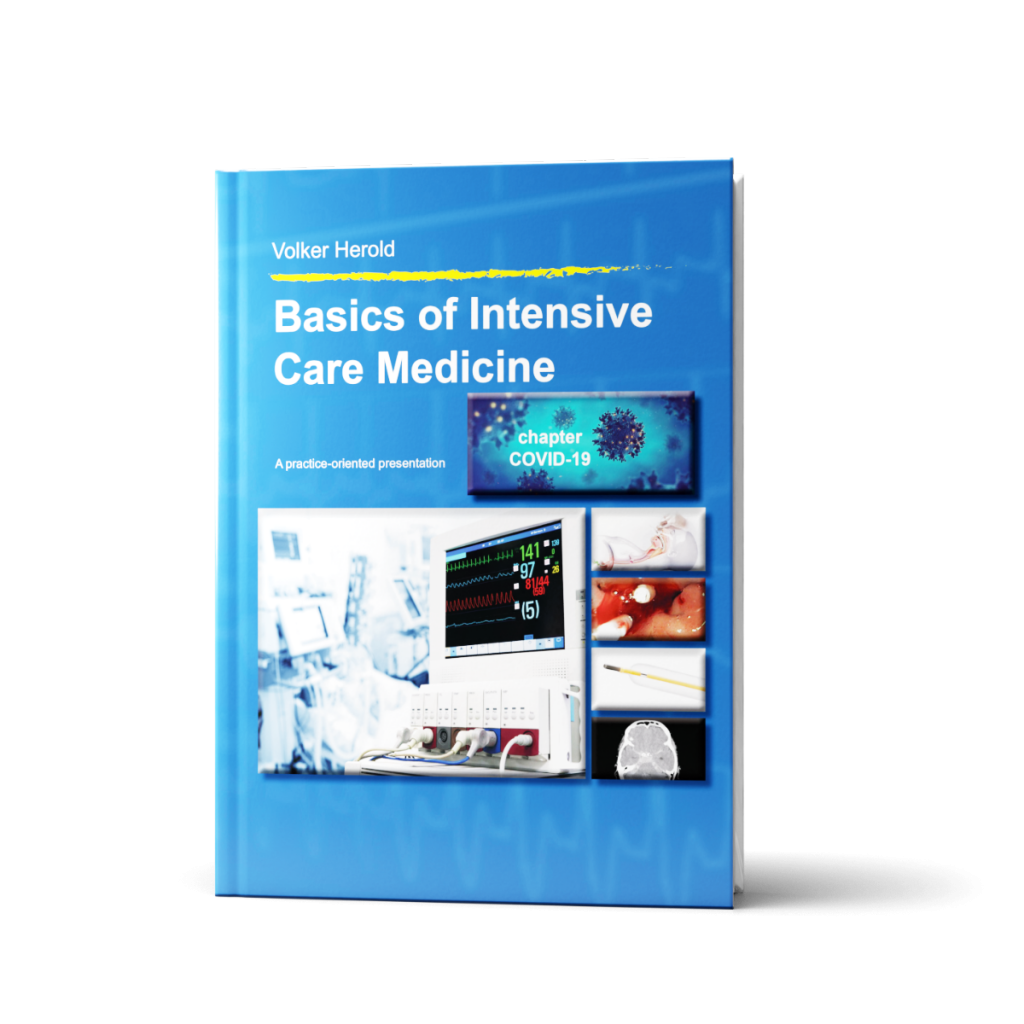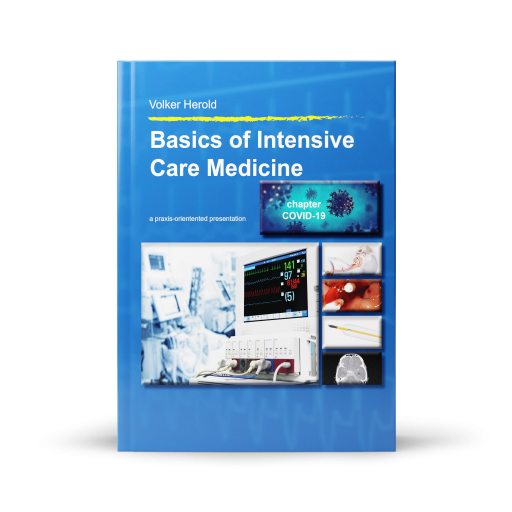COVID ICU E-Book – Treating COVID
Since the first cases were reported in the Province Wuhan in China, SARS-CoV-2 and its resulting disease COVID-19 has spread rapidly worldwide and was finally classified as a pandemic by the WHO on March 11, 2020. Over a million of death were reported at the end of September 2020. In April 2021 the 3 million mark of deaths worldwide was broken and in January 2024 even the 7 million mark.
In this e-book all topics of Intensive and Critical Care Medicine and all aspects of SARS-CoV-2 and COVID-19 are presented. In addition to detailed information on the virus, epidemiology, symptoms, risk factors and complications, the extensive COVID chapter shows the diagnostics, hygiene measures and, above all, the current therapy. The corresponding international guidelines of the Surviving Sepsis Campaign on COVID have been implemented.

In Depth Knowledge on COVID-19 and the Intensive and Critiacal Care Medicine
5% of all patients and 20% of all hospitalized patients show a severe course and require critical care medicine. The focus of this book is particularly put on critically ill patients with COVID-19 on ICU. For this reason, all basic topics of intensive care medicine are dealt with in extensive chapters beforehand:

- Airway management
- Ventilation principles and ventilation techniques
- Weaning
- Tracheotomy
- Chest Tube (thoracic drainage)
- Analgosedation
- Catecholamine therapy
- Hemodynamic monitoring
- Shock
- Nutrition
- Resuscitation
- ECMO
- Acute kidney injury
- Renal replacement therapy
- Acute coronary syndrome
- Cardiogenic shock
- Cardiac arrhythmias
- Extracorporeal circulatory support
- Inflammatory heart diseases (endocarditis, myocarditis, pericarditis; i.a. pericardial puncture
- Hypertensive crisis
- Acute pulmonary embolism
- Acute aortic syndrome
- Sepsis
- ARDS
- Pulmonary hypertension
- Acute right heart failure
- Obstructive lung diseases (Status asthmaticus, exacerbated COPD)
- Interstitial lung diseases
- Bronchial hemorrhage
- Gastrointestinal bleeding
- Acute pancreatitis
- Gastrointestinal atony
- Complications of liver cirrhosis
- Acute liver failure
- Acute mesenteric ischemia
- Peumonia
- Multi-drug resistant organisms (MDRO)
- Skin and soft tissue infections (SSTI)
- Fungal infections (mycoses)
- Malaria
- Endocrinological emergencies
- Disorders of electrolytes
- Disorders of acid-base balance
- Blood products (i.a. red cell concentrates, platelet concetrates, FFP, PCC, antithrombin, fibrinogen, faktor VII, XIII)
- DIC (disseminated intravascular coagulation)
- Hyperfibrinolysis
- AHA (aquired hemophilia)
- von Willebrand disease
- ITP (idiopathic thrombocytopenic purpura)
- HIT (heparin-induced thrombocytopenia)
- APS (antiphospholipid syndrome)
- TMA (thrombolic microangiopathies)TTP (thrombotic thrombocytopenic purpura)
- HUS (hemolytic uremic syndrome)
- HELLP syndrome
- Upper venous congestion (Superior vena cava syndrome)
- Spinal compression syndrome
- Brain metastases
- Tumor lysis syndrome
- Hyperleukocytosis (Leukostasis syndrome)
- GvHD (graft versus host disease)
- Neutropenic fever
- Pneumocystis jirovecii pneumonia
- Stroke
- Intracranial hemorrhage
- Status epilepticus
- Bacterial meningitis
- Brain death (irreversible loss of brain function), organ donation
- Neuromuscular diseases
- Transient global amnesia
- Crises in movement disorders
- General toxicology
- Special toxicology
- Intoxications with medicaments
- Intoxications with drug
- Intoxications with alcohols
- Intoxications with chemicals
- Intoxications with metals
- Intoxications with gases
- Intoxications with mushrooms
- Intoxications with plants
- Intoxications with fish
- Intoxications with snakes
- Spinal compression syndrome
- Traumatology (major trauma, electrical incident, drowning incident, hypothermia, hyperthermia, burns)
- Ethics & Law
Based on Bestseller in Germany
This e-book has its origin in the German version of “Medical Intensive Care Medicine”, which is already in its 10th edition and is the top-selling intensive care medicine book in Germany (Bestseller Lehmanns Media). Customer feedback for the German version praises the highly detailed and up-to-date information and its relevance in interdisciplinary medical fields, calling it a must-have in intensive care units and emergency departments. This practical guide is written by senior physician Dr. med. Volker Herold who also provides compact courses on intensive care medicine in Germany since over ten years. The book currently features 588 pages of content with almost 600 informative figures and 120 tables.


